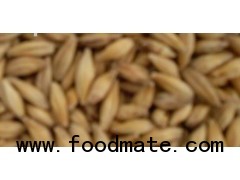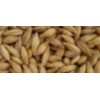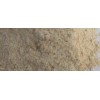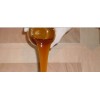We are a renowned manufacturer of barley malt like finest quality barley malt and processed barley malt extensively used in used in breweries, distilleries, malted milk food manufacturers, confectioners and pharmaceutical and more. Prepared from the finest quality ingredients our products are highly acclaimed across the globe for high nutritive value, safe to consume and variety of colors an flavor.
We are one of the leading manufacturers of a wide range of barley malt finest quality barley malt and processed barley malt prepared from finest quality barley. Produced with the aid of our requisite machines these are extensively used in breweries, distilleries, malted milk food manufacturers, confectioners and pharmaceutical and more.
The process of converting barley into malt involves 3 stages:
Steeping:
The first stage involved in the conversion of barley into malt is known as steeping. Under this process once the barley is separated from the foreign material it is graded to specific size. This barley is then shifted to steel tanks provided with outlet pipes and water inlets to carry out vigorous aeration and mixing of the barley/water mixture with the aid of compressed air. Once barley reaches water content of 43-56%, steeping is stopped.
Germination:
Once steeping is over, the steeped barley is shifted to germinating floors or room to allow germination under controlled air, moisture and temperature conditions. The entire germination period takes 4-7 days depending upon the type of barley, preferred use of malt and the germination method used. To carry out apt kernel modification and yield the various aspects of germination should be kept under constant balance.
While the germination is taking place many enzymatic systems gets activated such as oxidative and reductive systems involved with the respiration phase. The other enzyme systems break down the endosperm cell structure which measure germination rate once the pentose production is evaluated. The activate B-amylase or proteolytic enzymes release act on the proteins present, to make them soluble. Howeverabout 40% of the total protein is made soluble in water. Optimum germination activates a balanced enzyme system and hydrolyzes the starches present.
Kilning:
Kilning or drying at appropriate time and optimum degree of starch modification, stops the germination. The heat catalyses additional reaction, which results in color and flavor development. The germinated malt or green malt at this point of time is hastily and cautiously dried to approximate''^^^ moisture, leaving the activated enzymes intact. When drying period is over the sprouts and other extraneous materials are removed and the kernels are ready for further processing.
The process of converting barley into malt involves 3 stages:
Steeping:
The first stage involved in the conversion of barley into malt is known as steeping. Under this process once the barley is separated from the foreign material it is graded to specific size. This barley is then shifted to steel tanks provided with outlet pipes and water inlets to carry out vigorous aeration and mixing of the barley/water mixture with the aid of compressed air. Once barley reaches water content of 43-56%, steeping is stopped.
Germination:
Once steeping is over, the steeped barley is shifted to germinating floors or room to allow germination under controlled air, moisture and temperature conditions. The entire germination period takes 4-7 days depending upon the type of barley, preferred use of malt and the germination method used. To carry out apt kernel modification and yield the various aspects of germination should be kept under constant balance.
While the germination is taking place many enzymatic systems gets activated such as oxidative and reductive systems involved with the respiration phase. The other enzyme systems break down the endosperm cell structure which measure germination rate once the pentose production is evaluated. The activate B-amylase or proteolytic enzymes release act on the proteins present, to make them soluble. However
Kilning:
Kilning or drying at appropriate time and optimum degree of starch modification, stops the germination. The heat catalyses additional reaction, which results in color and flavor development. The germinated malt or green malt at this point of time is hastily and cautiously dried to approximate''^^^ moisture, leaving the activated enzymes intact. When drying period is over the sprouts and other extraneous materials are removed and the kernels are ready for further processing.










